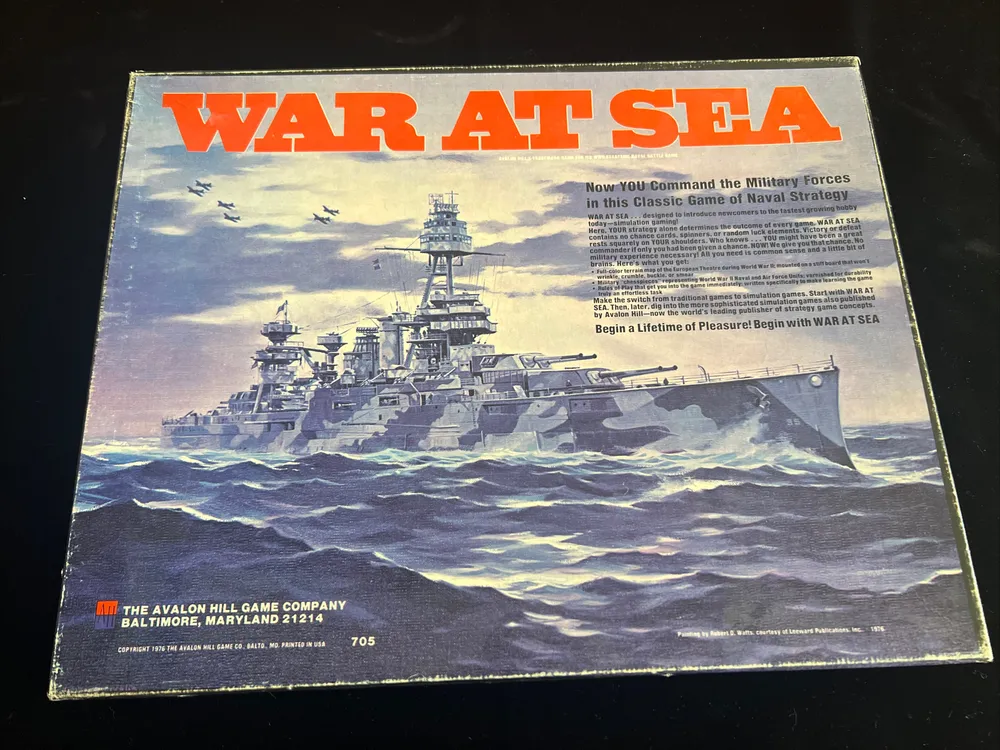War at Sea (Second Edition) (1976)
War at Sea
“War at Sea” is a strategic board wargame that depicts the naval war in the Atlantic during World War II. It was published by Jedko Games in 1975 and later republished by Avalon Hill in 1976. The game has been reprinted several times since then, with the latest edition being the Third Edition. The game is part of the Second World War at Sea series, which includes various naval wargames set during World War II.
Why is War at Sea Popular?
“War at Sea” is popular for several reasons:Ease of play: The game is relatively simple to learn and play, making it accessible for both newcomers and experienced players.Historical accuracy: The game accurately represents the naval warfare of World War II, with a focus on the Atlantic Ocean and the Mediterranean Sea.Suitable for teams: The game is designed for two players, making it ideal for team play.Short playing time: The game has a relatively short playing time of around an hour, making it suitable for casual gamers.
Game Components of War at Sea
How To Setup War at Sea
Setup involves each player setting their ships in designated ports. The Allied player’s ports include England, the United States, Leningrad, and Malta, while the Axis player’s ports include Germany, France (after Turn Two), and Italy. Each player organizes their units, including ships, convoys, and air power, according to the game’s initial setup rules. The board is laid out with the six sea zones, and players are ready to begin their turns.
Gameplay Mechanics and Game Objective
Player Experience
**War at Sea** offers a simplified yet engaging introduction to naval warfare during WWII. The game is praised for its excitement and ease of play, making it ideal for newcomers to wargaming. However, it has been criticized for its reliance on luck due to the numerous dice rolls involved, earning it nicknames like ‘Dice at Sea’ and ‘Yahtzee at Sea’.
Pros
Cons
Personal Thoughts on War at Sea
**War at Sea** is perfect for those new to wargaming or looking for a light, fun introduction to strategic naval battles. It is not ideal for players seeking a highly realistic or complex simulation, but it serves well as a starter game or a casual, enjoyable experience. The game’s simplicity and excitement make it a great addition to any board game collection.
We are supported by our audience. When you purchase through links on our site, we may earn an affiliate commission, at no extra cost for you. Learn more.

